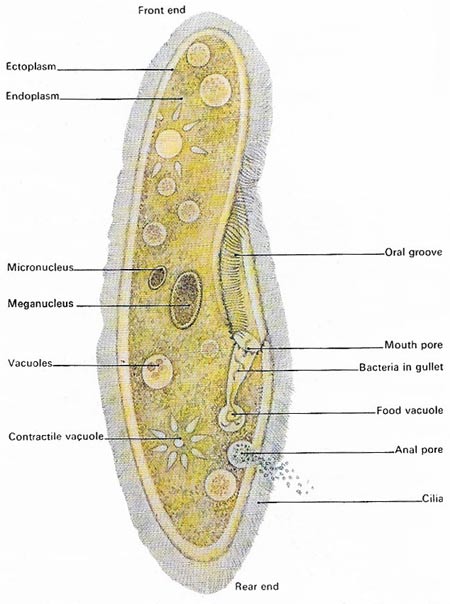ciliate

Paramecium.
A ciliate is any one of the approximately 8,000 species of the phylum Ciliophora characterized by hair-like cilia used for locomotion and food collecting. Ciliates are among the largest and most complex of the protists. Subclasses include the Holotrichs, with cilia over the entire body (Paramecium); Spirotrichs, with fused cilia around the mouth (Stentor); and Peritrichs, with cilia around the mouth and possessing a stalk for attachment (Vorticella). Ciliates are found in both aquatic and terrestrial habitats and many are carnivorous, They have two nuclei – a macronucleus and a micronucleus – and a variety of organelles such as a cystome (mouth).
Paramecium
Paramecium is a specialized single-celled animal. The outer layer of the cell, the ectoplasm, is bounded by a tough skin through which many tiny hairs or cilia protrude. Regular beating actions of the cilia produce locomotion. The oral groove extends into the inner granular endoplasm, forming a blind-ended gullet. Food particles are pushed into the gullet by ciliary action and enclosed in vacuoles. As food vacuoles circulate through the endoplasm their contents are digested by enzymes. Undigested and unabsorbed materials are expelled via the anal pore. The water content of the cell is controlled by the action of the two contractile vacuoles. Of the two nuclei present, the larger or meganucleus controls all day-to-day activities of the cell, while the smaller micronucleus is concerned with cell reproduction.


